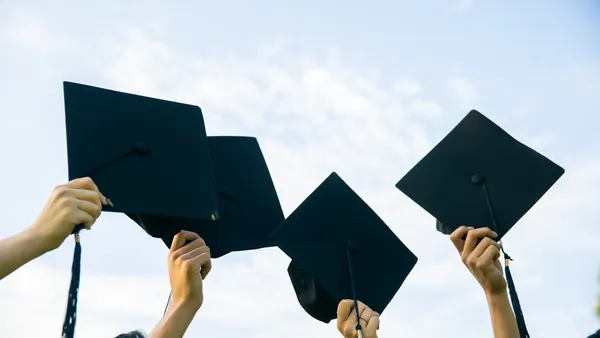Dive Brief:
- Almost a quarter of teachers have already brought virtual reality into their classrooms, and 55% say they expect to do so in the future given the benefits of student excitement and deeper understanding.
- A District Administration infographic, based on survey data from Extreme Networks, explains that science teachers are the majority among educators who have tried virtual reality (52%), followed by history (29%) and teachers of subjects other than engineering, arts, math, design and English (23%).
- Among the benefits of using virtual reality in the classroom, teachers say the tech excites students about learning, encourages creativity, makes difficult concepts easier to understand, and lowers the cost of field trips.
Dive Insight:
Virtual reality is one of the technologies people have their eye on. The 2016 Horizon Report, produced by the New Media Consortium and the Consortium for School Networking, named virtual reality among the tech developments that could foster real changes in education in the next two to three years. Google is adding new Expeditions to its catalog of virtual field trips all the time and government organizations like the Smithsonian are adding their own.
Key to incorporating virtual reality into classrooms is having a clear pedagogical framework. It is easy to incorporate virtual reality as an add-on to existing lessons that excites students. What's harder is embedding the virtual reality experience into the learning itself. Schools that want teachers to use VR might consider offering targeted professional learning opportunities to ensure they are doing so in the right ways.










